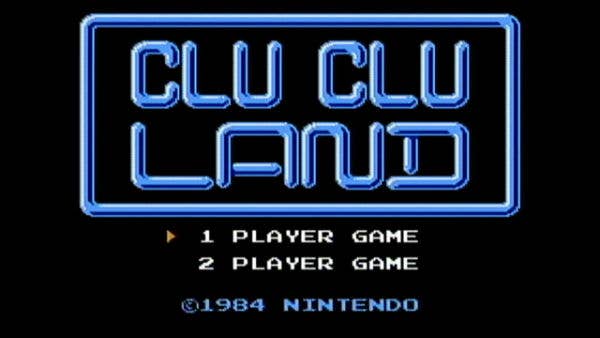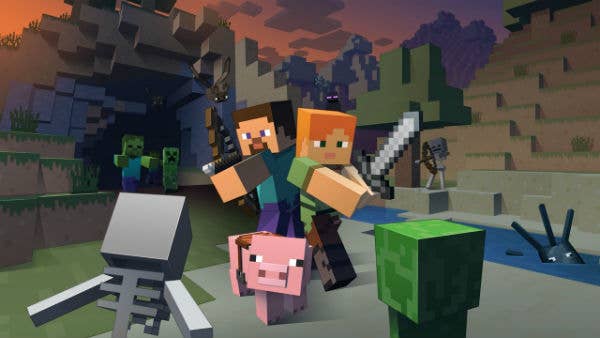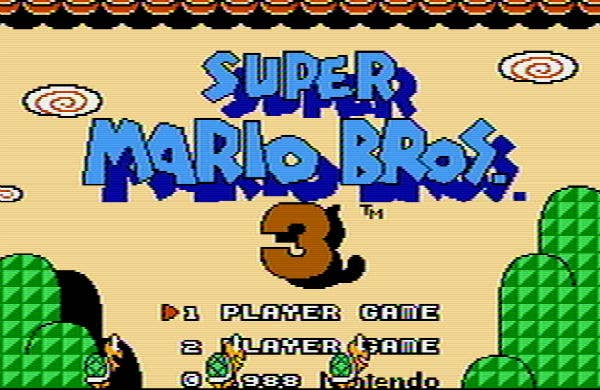If Nintendo Wants More Young Fans, It Needs to Embrace YouTube
Content strikes and takedown notices are not good ways to sell the YouTube generation on your games.
This article first appeared on USgamer, a partner publication of VG247. Some content, such as this article, has been migrated to VG247 for posterity after USgamer's closure - but it has not been edited or further vetted by the VG247 team.
Video games have changed a lot across the past twenty years, but not nearly as much as the way we access game news and info. The days of sneaking into the local variety store, grabbing GamePro off the rack, and gorging on previews until the clerk started hollering are long gone. Even TV is increasingly bereft of game commercials.
The majority of reveals for games big and small come to us through the Internet, usually accompanied by a YouTube trailer. YouTube's relevance in the gaming space goes way beyond game unveilings, though. Online videos are more or less the new TV for children. Where twenty- and- thirty-somethings fixed themselves to the television for Saturday morning cartoons, children today take in their culture through YouTube videos, Twitch streams, and Let's Plays.
This shift in consumption has been a huge boon to games like Minecraft and Five Nights at Freddy's, both of which became phenomenally popular after noted YouTubers like PewDiePie and Markiplier recorded and streamed footage of the games for their followers.
Not everyone is happy about youngsters' preference for YouTube over the printed word (particularly writers, who stare up at the ceiling at three in the morning and spin mental images of the Grim Reaper touching their career with a cold, bony finger), but feelings are irrelevant in the face of facts: This is the way things are now. The kids like videos.
"Let's-a Stop!"
That's why Nintendo's prolonged fight against YouTube the industry's most baffling waste of energy. The company plans to diversify its properties and spread Mario's likeness so that children will latch onto him as early as possible, yet it won't have anything to do with the number-one method of content distribution amongst kids. What few permissions it gives to YouTubers are mired in bureaucracy.
For starters, YouTubers who want to use footage of Nintendo's games legally have to deal with the Nintendo Creators Program. The program lets Nintendo take a chunk of whatever revenue your video earns -- and if you're not PewDiePie, that number probably isn't a big one.
Moreover, Nintendo will likely issue a copyright strike against your video if the game you're featuring isn't on its cringingly short "whitelist." Brand-new releases are almost invariably a no-no, but if you want to monetize your video about Clu Clu Land, baby, you're golden.

The sign-up and payout process for the Nintendo Creators Program is also agonizingly convoluted according to YouTuber Chris "MarauderEX" Stollings.
"The interface is very poorly designed, it doesn't have clear indications of how the videos are being processed, how it interacts with YouTube, or any sort of payment analytics," he says. "And since it is still in beta, the wording for the program is too nebulous. [Nintendo states]that it can change the program at any time, without warning. [It] makes people very nervous to trust a company that won't hold their own agreements."
In other words, if Nintendo suddenly decides it's not OK with you monetizing that video of Clu Clu Land for whatever reason, you're out of luck.
Mine-Crafting Bad Feelings
The Nintendo Creators Program -- which hasn't seen an update or announcement since March of 2015 -- is obviously a last-ditch, toothless effort for the control-happy Nintendo to control how we consume its properties. But even if Nintendo doesn't want to put any work into building good will with YouTubers, it should, at the very least, fix the problems that make it glaringly obvious it wants nothing to do with the modern age of media.
Case in point: When YouTubers tried to upload footage of the Super Mario Mash-Up content update for the Wii U edition of Minecraft, Nintendo quickly issued copyright notices for the Nintendo-themed content within said videos. The irony here, of course, is that Minecraft is every bit a YouTube legend as it is a game legend. Children consume Minecraft videos like water. YouTube and Minecraft are inseparable.

And Nintendo utterly refuses to understand this. Hence, the copyright notices.
To make Nintendo's indifference even more disappointing, there's been no news from Nintendo or 4J Studios (the team handling the Mash-Up) that the problem has been fixed since Nintendo supposedly started "looking into it" when the Mash-Up launched on May 17. Even if there was a quiet, behind the scenes adjustment, it behooves Nintendo to say "Our bad. We fixed it. Feel free to share and monetize whatever content you want, Minecraft fans. You're important to us."
Videos Don't Kill Games. Bad PR Kills Games
You don't have to dig too deep into Nintendo's history to understand why it looks at videos and streaming with wary eyes. The N64 clung to cartridges while the rest of the world moved on to CDs. The Wii's online infrastructure was a joke. And when you use the term "cloud" in a Nintendo context, you're probably referring to the Spiny-slinging turtle Lakitu instead of online storage.
It's not that Nintendo doesn't like to innovate. The company still delivers mind-blowing twists on gaming's most tried-and-true ideas. But it clearly fears situations and environments it has little control over, and if the term "chaotic" can't describe YouTube, it can't describe anything.
Nobody can tame YouTube, though. You just tuck in and roll with whatever it delivers.
Nintendo probably also fears people will watch Let's Plays of its games instead of buying the actual product. But it's hard to gauge how much revenue a developer can potentially lose from YouTube, if any. In fact, whereas word of mouth and exposure can kindle interest in a game, bad press regarding copyright strikes is guaranteed to squash that interest.
It's not as if every game-based YouTube video is created for the same reason, either. As Stollings points out, "I can watch the world record speed run of Mega Man 2, however, that doesn't mean I'm skilled enough to do [a speed run]."

Stollings also argues that if watching someone playing a game actually offers an experience equal to playing one, siblings would never bother fighting over who gets to play Super Mario next.
Nintendo's not sold, though. It even culls videos that go to bat for its less-than-popular games, as YouTuber Joe Walker discovered recently.
"My wife and I are huge Animal Crossing fans, so we did a YouTube livestream of Animal Crossing: Amiibo Festival to show people that the game is worth checking out, since it was getting so much negative press," he says. "We spent the entire session talking up the game, but as soon as the archive went on my channel, Nintendo claimed it.
"I don't make much money from my videos, but it was just a bummer to have Nintendo want to take what little I do make when I just spent over an hour showing why their critically-panned game was actually fun."
Relax, Nintendo
Nintendo understands that it needs to do two things to ensure a healthy future: Keep its established decades-old fanbase happy, and make kids take notice of icons like Mario and Link. However, its current YouTube policies are sowing resentment amongst its dedicated supporters. Copyright is copyright, yes, but there's just no way to look good while you're siphoning nickels and dimes from long-time fans.
"I don't think [Nintendo is] creating a lot of goodwill by trying to take YouTubers' pennies through copyright claims," says YouTuber Joe Drilling. "What a lot of people don't realize is that, yeah, it's basically pennies."
As for the kids? They're just going to go back to Minecraft, or Five Nights at Freddy's, or whatever else their favorite YouTube personality is playing at that moment. Sure, they might get to know Mario through their parents' games, or through the inevitable new movie, or through Universal's upcoming theme park. But isn't that a bit like washing a window by popping it out of its frame and dunking it in soap and water? Why make things more complicated and inaccessible than they have to be?
Popular video-people want to advertise your games for free, Nintendo. Let them.

